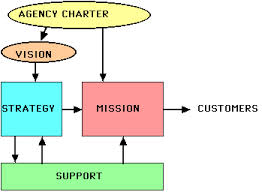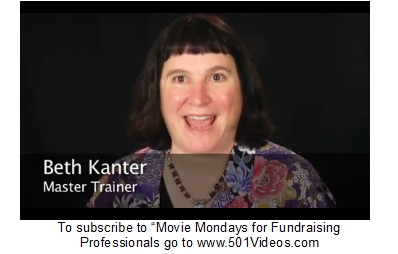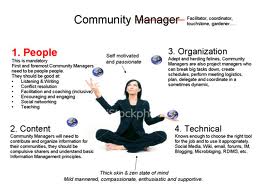 As many of you know, I subscribe to many different blogs and eNewsletters, and I do a lot of reading. A few weeks ago, I received an eNewsletter called theInsider in my email inbox. It is a connection back to my Boys & Girls Club family. I’ve always loved this publication because there has never been a time after reading it that I didn’t have something to mentally chew on. The July 29th edition planted the following one very powerful thought in my head:
As many of you know, I subscribe to many different blogs and eNewsletters, and I do a lot of reading. A few weeks ago, I received an eNewsletter called theInsider in my email inbox. It is a connection back to my Boys & Girls Club family. I’ve always loved this publication because there has never been a time after reading it that I didn’t have something to mentally chew on. The July 29th edition planted the following one very powerful thought in my head:
Women are powerful!
I know that for some of you, this revelation falls flat because you probably already knew this. And I suppose that I did, too. However, the article in the eNewsletter that drove this point home shared a series of bullet points and startling facts, and each one was more powerful than the previous one. Here are just a few of those facts about women:
- Women make 85% of the consumer decisions.
- Women make 80% of healthcare decisions.
- Women make 92% of vacation decisions.
- 2 out of 5 business owners are women.
While these startling statistics are eye popping, it was the following philanthropy-related facts that got my attention:
- Women are more generous than men. A recent study by the Center on Philanthropy at Indiana University found for every $100 men gave, women in the same economic circumstance gave $258.
- Women donate on average twice as much to charity as men and make three times as many contributions.
- Women primarily support charities with a focus on children in need, education, health and other women-related causes.
- Primary motivators for women are: change, create, commit, connect, collaborate and celebrate.
The author of this eNewsletter article started it with this simple and thought provoking question:
Do your fundraising strategies include women?
This question has haunted me for the last few weeks. In all of my years of working with non-profit organizations, I am hard pressed to think of more than a small handful of agencies who I’ve seen execute strategies focused exclusively on women.
 This is the short list I’ve managed to come up with:
This is the short list I’ve managed to come up with:
- A fundraiser where women donors were invited to afternoon tea with the agency’s female members who put on a fashion show.
- A fundraiser where women were honored for their community leadership.
- A donor circle that consists exclusively of women.
I’m sure there are a few more, but I haven’t been able to think of them in the last few weeks.
I always start to giggle when I think about how many of us (and I’ve done these things, too) are making simple and easy to fix mistakes, such as:
- Focusing 100% of stewardship activities on the male head of household when we know that he is likely to die first leaving everything to her including the planned giving decision-making.
- Sending letters (e.g. solicitations, acknowledgement, etc) to him and not to him AND her.
- Calling the household and asking for him and not her.
- Looking for auction items that appeal to him
(e.g. tickets to sporting events) and not necessarily her (of course, I have met more than my fair share of rabid female fans of the Chicago Cubs throughout the years).
Perhaps, the most important revelation we can and should take away from this discussion is that women are different than men in many respects when it comes to philanthropy, making decisions, and what they want to hear. The eNewsletter article acknowledged that women donors need to be stewarded differently than their male counterparts when they said:
“Women desire deeper communication, a greater efficiency and effect, they want to know the impact of the support, are more likely to stop giving if not properly stewarded and view volunteering as an important part of their involvement/investment.”
Still not convinced in the philanthropic power of women? Then please explain to me why Indiana University’s Lilly Family School of Philanthropy has an subdivision called the “Women’s Philanthropy Institute“?
What is your agency doing to cultivate, solicit and steward women? Are you making some of the same mistakes that I listed above? If so, what are you going to do about it? Does your organization have an event or fundraising strategy focused solely on women? Please scroll down and share a few of your thoughts and ideas in the comment box below because we can all learn from each other.
Here’s to your health!
Erik Anderson
Founder & President, The Healthy Non-Profit LLC
www.thehealthynonprofit.com
erik@thehealthynonprofit.com
http://twitter.com/#!/eanderson847
http://www.facebook.com/eanderson847
http://www.linkedin.com/in/erikanderson847

 Welcome to O.D. Fridays at DonorDreams blog. Every Friday for the foreseeable future we will be looking at posts from John Greco’s blog called “
Welcome to O.D. Fridays at DonorDreams blog. Every Friday for the foreseeable future we will be looking at posts from John Greco’s blog called “ Do you see it? Culture eats strategy!
Do you see it? Culture eats strategy! Hmmmm … looking back at that meeting, I think he was cooking up a hearty breakfast for me.
Hmmmm … looking back at that meeting, I think he was cooking up a hearty breakfast for me. Welcome to part three of our five-part series on Governance. We have already discussed the Board’s role in
Welcome to part three of our five-part series on Governance. We have already discussed the Board’s role in  I recommend organizations have the following policies:
I recommend organizations have the following policies: Policies address today. Plans take you into the future.
Policies address today. Plans take you into the future.

 The audit is prepared by an independent accounting firm in an effort to assess if the organization is operating in accordance with Generally Accepted Accounting Principles (GAAP) and also within their commitments. Different audits are required based on the amount of government funding that is received. The costs of such audits vary depending on the budget size, revenue streams, and also the quality of the financial systems and the need to for the auditor to clean up those systems.
The audit is prepared by an independent accounting firm in an effort to assess if the organization is operating in accordance with Generally Accepted Accounting Principles (GAAP) and also within their commitments. Different audits are required based on the amount of government funding that is received. The costs of such audits vary depending on the budget size, revenue streams, and also the quality of the financial systems and the need to for the auditor to clean up those systems. Finally, as part of meeting their fiduciary responsibility, the Board should understand how the programs tie to the mission, the number of people served in those programs as well as the impact of that program.
Finally, as part of meeting their fiduciary responsibility, the Board should understand how the programs tie to the mission, the number of people served in those programs as well as the impact of that program.
 Once your hire an Executive Director, s/he needs to be supported. Supporting an Executive Director is where the rubber meets the road.
Once your hire an Executive Director, s/he needs to be supported. Supporting an Executive Director is where the rubber meets the road.
 I suspect many of you are nodding your heads right now. However, stop and think about your last week and where you spent your time. I suspect that many of you focused lots of time, energy and resources on the pebbles, sand and liquid in your non-profit jar such as:
I suspect many of you are nodding your heads right now. However, stop and think about your last week and where you spent your time. I suspect that many of you focused lots of time, energy and resources on the pebbles, sand and liquid in your non-profit jar such as:
 As you can probably imagine, I subscribe to a lot of things — everything from eNewsletters to blogs — and I do a lot of reading. It helps me be a better non-profit consultant, and equally important it helps me be a better thought-leader / blogger. This brings me to an article written by Cody Switzer in The Chronicle of Philanthropy titled “
As you can probably imagine, I subscribe to a lot of things — everything from eNewsletters to blogs — and I do a lot of reading. It helps me be a better non-profit consultant, and equally important it helps me be a better thought-leader / blogger. This brings me to an article written by Cody Switzer in The Chronicle of Philanthropy titled “ Cody’s article about the
Cody’s article about the  This person isn’t a “technology person” working in your IT department. In fact, they don’t need to have many of those skill sets because you either already have an a) IT person on your payroll, b) relationship with an IT consulting firm or c) utilize “in-the-box” technology (e.g. Press Publisher, 1and1.com, etc) that comes with a toll-free help desk when things get dicey.
This person isn’t a “technology person” working in your IT department. In fact, they don’t need to have many of those skill sets because you either already have an a) IT person on your payroll, b) relationship with an IT consulting firm or c) utilize “in-the-box” technology (e.g. Press Publisher, 1and1.com, etc) that comes with a toll-free help desk when things get dicey. I’ve seen it happen way too often. A fundraising professional or the executive director says to a group of people — using at a board meeting — something like this: “We need volunteers to help with our special event fundraiser. Who can help?” At first, there is an awkward silence and no hands go up. Then there are a few reluctant hands. Whenever I see this happen, I’m always left wondering if those were the right people for the job and how many of those people are clowns?
I’ve seen it happen way too often. A fundraising professional or the executive director says to a group of people — using at a board meeting — something like this: “We need volunteers to help with our special event fundraiser. Who can help?” At first, there is an awkward silence and no hands go up. Then there are a few reluctant hands. Whenever I see this happen, I’m always left wondering if those were the right people for the job and how many of those people are clowns? I was sitting in the bleachers at Wrigley Field. I was there with my father and my partner. The quality of baseball on the field was terrible, there was a constant drizzle of rain falling from the sky, and the fans were obviously getting antsy. Suddenly, one of the fans got to his feet and yelled at the top of his lungs:
I was sitting in the bleachers at Wrigley Field. I was there with my father and my partner. The quality of baseball on the field was terrible, there was a constant drizzle of rain falling from the sky, and the fans were obviously getting antsy. Suddenly, one of the fans got to his feet and yelled at the top of his lungs: I’m sure some of you are probably skeptical and for good reason. I mean how crazy and distracting would it be to have a committee of people who all want to be the center of attention. Crazy . . . I’m sure! However, I can’t help but dream about the type of event those folks would build in the name of securing more recognition and attention all to benefit my agency.
I’m sure some of you are probably skeptical and for good reason. I mean how crazy and distracting would it be to have a committee of people who all want to be the center of attention. Crazy . . . I’m sure! However, I can’t help but dream about the type of event those folks would build in the name of securing more recognition and attention all to benefit my agency. When it comes to financial management, I’ve run into two types of non-profit organizations. There are those organizations who struggle with financial management and don’t have a strong and independent Finance committee in place. Then there are agencies whose Finance committee is the strongest voice in the boardroom. For the latter type of organization, the question about whether or not to form an audit committee always seems to linger in the air with a diversity of opinions spinning around it.
When it comes to financial management, I’ve run into two types of non-profit organizations. There are those organizations who struggle with financial management and don’t have a strong and independent Finance committee in place. Then there are agencies whose Finance committee is the strongest voice in the boardroom. For the latter type of organization, the question about whether or not to form an audit committee always seems to linger in the air with a diversity of opinions spinning around it.